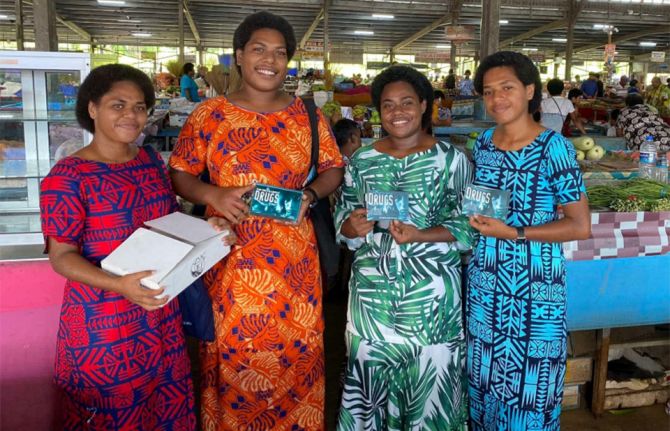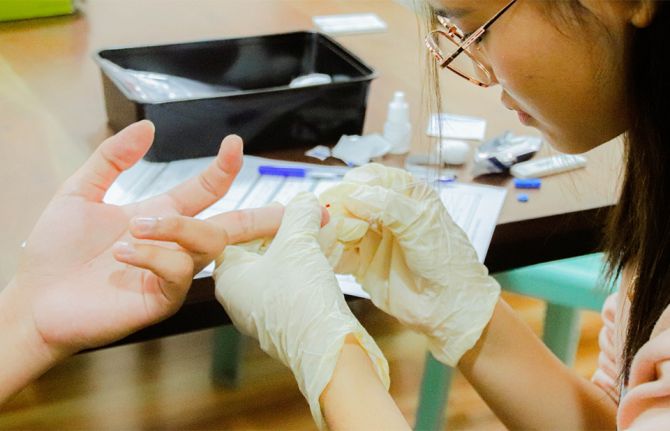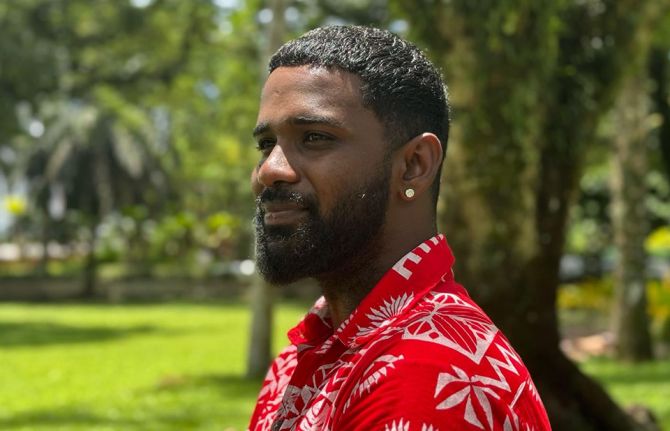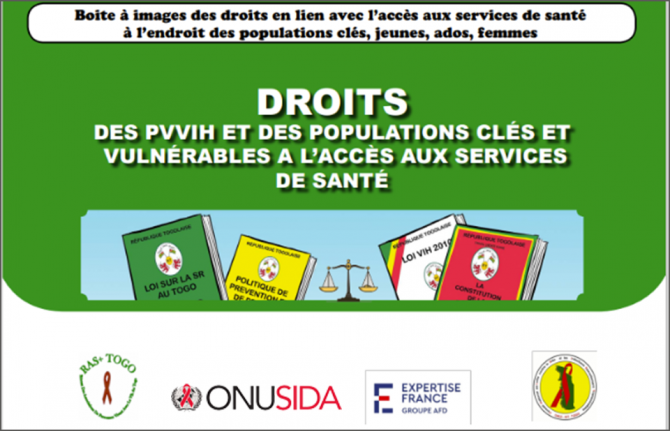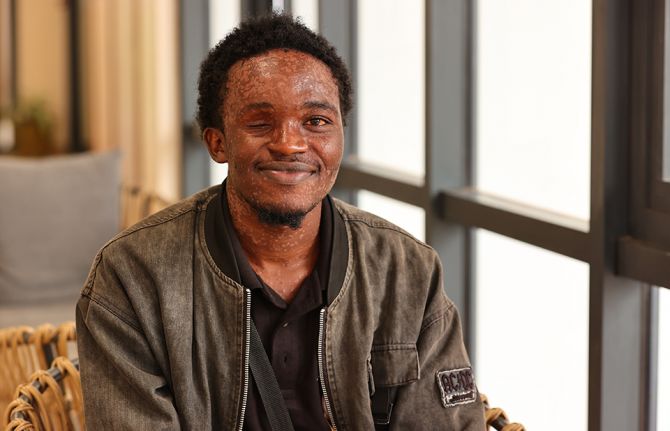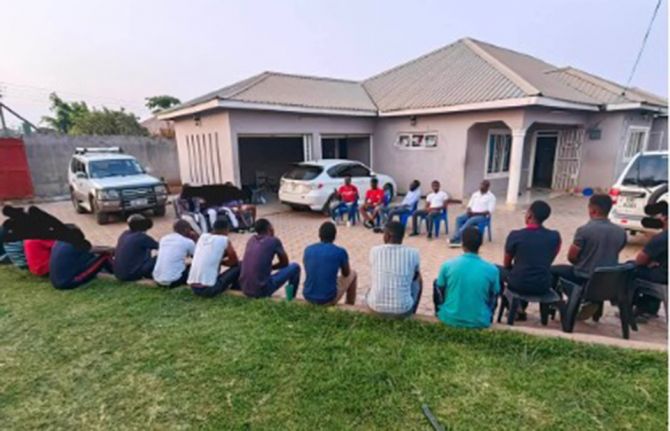
Feature Story
‘Thinking politically’: strategies for effective responses to HIV in Asia and the Pacific
28 August 2011
28 August 2011 28 August 2011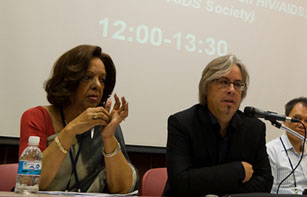
Dr Nafis Sadik, United Nations Secretary-General Special Envoy for HIV/AIDS, Dr Kent Buse, Senior Advisor at UNAIDS and Dr Werasit Sittitrai, Thai Red Cross on the panel of “Thinking Politically.”
Credit: UNAIDS/Kim
Activists, academics and HIV programme implementers met in Busan, South Korea at the 10th International Congress on AIDS in Asia and the Pacific (ICAAP 10) to explore and debate the political complexities of HIV responses. The event, entitled ‘Political Sciences and the Politics of HIV in Asia and the Pacific,’ shed light on the often highly contested nature of responses to the epidemic.
This satellite was part of a global initiative spearheaded by UNAIDS and the International AIDS Society, ‘Thinking Politically about HIV.’ The initiative seeks to strengthen the capacity of people engaged in the response to understand and influence politics in a more systematic way in order to foster an enabling environment for effective AIDS responses.
Panellists shared experiences of effective political analysis which have been used to identify strategic opportunities to move the agenda on HIV in a positive direction in countries across the region.
“When I began my work in reproductive health, I found enormous suspicion and ignorance, even among highly educated people. A great deal of that negativity has disappeared,” said Dr Nafis Sadik, United Nations Secretary-General Special Envoy for HIV/AIDS. “Political leaders came to understand that they had more to gain than to lose by responding to the enormous latent demand for reproductive health services, especially among women — and the same holds true for HIV.”
Political leaders came to understand that they had more to gain than to lose by responding to the enormous latent demand for reproductive health services, especially among women — and the same holds true for HIV
Dr Nafis Sadik, United Nations Secretary-General Special Envoy for HIV/AIDS
A number of countries in the Asia-Pacific region have shown impressive political responses over the last ten years. Thailand is one of the heralded ‘success stories’ in the 1990s resulting in dramatic declines if new HIV infections from 143,000 new infections in 1991 to 29,000 in 2000. Speaking at the session, Dr Werasit Sittitrai of the Thai Red Cross explained how that these results were achieved through a transformation of the political landscape, driven by evidence-based advocacy and civil society pressure. “One of the most successful strategies was advocating the potential economic consequences of inaction to political leaders,” he said.
While the region has much to progress to celebrate, the HIV response is at a crossroads. Programmes are buffeted by donor fatigue and many countries retain laws and policies that effectively prevent people living with HIV and key populations at higher risk from access to life saving services. In this context, a better appreciation of the politics of the challenges is critical to continued success — particularly by the next generation of leadership.
One of the most successful strategies was advocating the potential economic consequences of inaction to political leaders
Dr Werasit Sittitrai, Thai Red Cross
According to Dr Kent Buse, chair of the session and Senior Advisor at UNAIDS, “the AIDS response is particularly political because some of the behaviours that put people at risk of HIV — sex, sex work, and drug use — are taboo in many societies. People living with and affected by HIV have therefore continuously challenged the values and ideologies of leaders and the international community.”
Additional speakers at the event included Professor Dennis Altman, of La Trobe University, co-chair of the Advisory Group for Thinking Politically and Dr David Stephens of RTI International.
Discussion at the session will feed into broader debates and events for the 2012 International AIDS Conference (Washington DC, United States). A special issue of Contemporary Politics, featuring case studies on successful political responses to HIV in a number of countries, is being prepared for publication ahead of the 2012 Conference.

Feature Story
Eliminating new paediatric HIV infections and congenital syphilis in Asia-Pacific
27 August 2011
27 August 2011 27 August 2011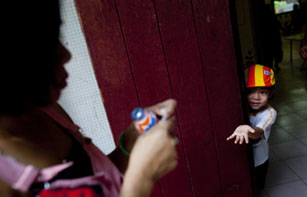
Ngan is living with HIV. She gave birth to her son, who was born free of HIV, because Ngan had access to PMTCT services.
Credit: UNAIDS/ Mott
One of the key goals of the global AIDS response is the elimination of new HIV infections among children by 2015 and keeping their mothers alive. In Asia and the Pacific, both Thailand and Cambodia are on track to reach this goal. However, overall, coverage of prevention of mother-to-child transmission is well below global averages, with very wide variations across the region.
During a symposium held on August 27 during The 10th International Congress on AIDS in Asia and the Pacific, experts explored how the 2015 elimination goal could be best achieved in Asia and the Pacific and what immediate concrete steps need to be taken. Organised by the United Nations Children’s Fund (UNICEF), the World Health Organisation (WHO) and UNAIDS, the session also reviewed progress on prevention of mother-to-child transmission of HIV and discussed opportunities and challenges.
The event was intended to build on both the Global Plan towards the elimination of new HIV infections among children by 2015 and keeping their mothers alive, launched in June 2011, and a regional UN Task Force framework on the issue developed in November last year.
Participants heard that improved coverage of prevention of mother to child HIV and congenital syphilis services, better monitoring of mothers living with HIV and their children and greater coordination among health services in the region are critical to eliminating new infections in children.
“To reach the goal of zero new infections among children by 2015, national health services and communities need to work together,” said Steven Kraus, Director of the UNAIDS Regional Support Team for Asia and the Pacific in conjunction with the session. “By coordinating efforts, not only will lives be saved and HIV transmission to children be halted, but national health systems will be strengthened as well.”
To reach the goal of zero new infections among children by 2015, national health services and communities need to work together
Steven Kraus, Director of the UNAIDS Regional Support Team for Asia and the Pacific
Anupama Rao Singh, UNICEF Regional Director for East Asia and the Pacific, maintained that while countries in the region are working to scale up the elimination of new HIV infections among children, there was a need increase monitoring. “A lack of critical monitoring means they do not know how many children born to HIV-positive mothers are free of HIV and how many are infected,” she added, “Improved monitoring, especially through strong data management and follow-up, will go a long way towards our ultimate goal of having zero new infections among the region’s children.”
Without proper follow up systems, many of the children infected with HIV at birth or through breastfeeding will not be treated and about half will die before their second birthday.
The need to scale up antiretroviral (ARV) therapy was also highlighted.
"Technologies like the WHO 2010 recommendations for ARV drugs for treating pregnant women and preventing HIV infections in infants exist and we know what needs to be done. Now we have a new strategy to do it more efficiently and effectively in ways that also contribute to stronger health services,” said WHO South East Asia Regional Director, Dr Samlee Pliangbanchang. “The vision for a new generation free from HIV is within our reach."
By providing high-quality, coordinated, antenatal care and family planning services, identifying and treating pregnant women living with HIV and syphilis, and providing follow-up treatment for children, countries in the region can achieve the goal of zero new infections among their children and keeping their mothers alive, the participants concluded.
External links
External links

Feature Story
President of Fiji committed to the AIDS response
27 August 2011
27 August 2011 27 August 2011
UNAIDS Executive Director Michel Sidibé and President Ratu Epeli Nailitikau engage in discussion during ICAAP 10.
Credit: UNAIDS/Kim
In a meeting with the President of Fiji on 27 August, UNAIDS Executive Director Michel Sidibé commended the Fijian leader and his Government for recent amendments to the country’s 2011 HIV/AIDS Decree. Officially endorsed on 25 August, the amendments remove HIV-related travel restrictions and ensure greater protection for the rights of people living with HIV.
“Mr President, the United Nations salutes the bold and clear decision of your Government earlier this week to lift all travel restrictions for people living with HIV,” said Mr Sidibé. “People around the world need a voice like yours. I want to sincerely thank and recognize your efforts in the global response to AIDS.”
Calling AIDS “a great humanitarian challenge,” President Ratu Epeli Nailitikau said he was committed to not only preventing new HIV infections but also to working with people living with HIV and their families.
Mr President, the United Nations salutes the bold and clear decision of your Government earlier this week to lift all travel restrictions for people living with HIV
Michel Sidibé, UNAIDS Executive Director
“I don’t see any nobler cause than AIDS,” said President Nailitikau. “In the history of Fiji, we lost a third of our population due to measles; whole generations of the community perished. The flu had the same devastating effect. With a population of just 800 000, we cannot afford to lose any more of our population. That, for me, is the driving force of my engagement.”
The UNAIDS office in the Pacific is currently working with the Government of Fiji to translate the recommendations from the June 2011 UN General Assembly High Level Meeting on AIDS into action. Key areas of focus include eliminating new HIV infections among children, ensuring HIV services for key affected populations are available, and implementing the newly-amended Fijian HIV/AIDS Decree.
According to government figures, coverage of services to prevent new HIV infections in children in Fiji is low. Though there has been progress in expanding HIV services for populations at higher risk of HIV infection, stigma and discrimination remain major barriers to access.
While at ICAAP 10, the President of Fiji chaired a session focused on the AIDS response in the Pacific region. Participants addressed the role of faith-based organizations and young people in the HIV response, as well as the importance of providing an enabling legal environment to protect the rights of people living with and affected by HIV.

Feature Story
HIV travel restrictions – a primary obstacle to universal access for migrants
27 August 2011
27 August 2011 27 August 2011
Migrant worker Sarath shares his experiences with the panel.
Credit: UNAIDS/Kim
There are still about 50 countries, territories and areas around the world that impose some form of restriction on the entry, stay and residence of people living with HIV. Such restrictions remain a key form of discrimination, affecting the rights and freedom of movement of many migrants living with HIV and would-be migrants.
A symposium held at the 10th International Congress on AIDS in Asia and the Pacific on 27 August brought together expert panellists from various countries with and without HIV-related travel restrictions to discuss the experiences faced by migrant workers and by public health systems. Their aim was to put forward recommendations and concrete policy actions needed to eliminate travel restrictions for migrants living with HIV.
Organized by the Joint United Nations Initiative on Mobility and HIV/AIDS in South East Asia (JUNIMA) and sponsored by UNAIDS, UNDP and ILO, the panel was chaired by Clifton Cortez, the UNDP Practice Team Leader on HIV, Health and Development for Asia and the Pacific.
Some 15 countries in Asia and the Pacific impose some form of restriction on the entry, stay and residence of people living with HIV. We surely can be better than that
Clifton Cortez, the UNDP Practice Team Leader on HIV, Health and Development for Asia and the Pacific
“HIV is not a condition that should determine whether you are allowed to work or not; however, some 15 countries in Asia and the Pacific impose some form of restriction on the entry, stay and residence of people living with HIV. We surely can be better than that,” said Mr Cortez.
Mr Cortez was joined by Dr Chanvit Tharathep, Thailand’s Ministry of Public Health, Ms Maria Lourdes Marin, Executive Director, Action for Health Initiatives (ACHIEVE), Inc. Philippines, and Dr Lee Hang-Sun from the Ministry of Public Health in South Korea.
Sarath, as a migrant worker, shared experience of the limitations imposed by travel restrictions with the panel: “Testing for HIV and deportation of people who test positive makes no sense neither from a public health perspective nor from a financial point of view. We generate a lot of economic benefits to both sending and host countries and usually fall between the cracks in accessing social services, especially when we are abroad.”
We generate a lot of economic benefits to both sending and host countries and usually fall between the cracks in accessing social services, especially when we are abroad
Sarath, migrant worker from the Asia-Pacific region
Reintegration of migrants
Ms Marin talked about the reintegration process when migrants deported for their HIV status return home. This is a real issue for the Philippines which sends large numbers of migrants overseas.
“The reintegration process must be needs-based and responsive to specific contexts of migrants. It needs to be holistic, and address all the dimensions of HIV such as economic, political and psychosocial,” said Ms Marin. “To do that you need to have discussions taking into account all phases of the migration cycle, including pre-departure and post-arrival.”
Some countries hold that HIV-related travel restrictions are imposed to protect their nationals from ‘foreign’ diseases and to avoid increased healthcare costs. This rationale was refuted by Dr Chanvit from Thailand, a country which does not impose HIV-related travel restrictions:
“By providing universal access to health care for all, including migrants, we have not experienced an overflow of the health care system by migrants. What we have seen however is that we are better able to control infectious diseases and give treatment and care to those that need it.”
Dr Lee shared the South Korea experience: “Some people in South Korea still believe that HIV is a virus that comes from abroad. I hope ICAAP will give us the opportunity to join hands with civil society and work together on addressing the misconceptions regarding HIV.”
The way forward
The panel explored a series of recommendations to eliminate HIV-related travel restrictions and to promote universal access for migrant workers living with HIV. These included:
- Harmonize national policies on HIV and migration, promote collaboration between relevant ministries and civil society groups and support sustained bilateral and multi-country dialogues between sending and receiving countries;
- Establish minimum labour standards and health rights for migrant workers, and ensure that there are protection and support systems for migrants in destination countries;
- Build the capacity of Asian source countries to effectively reintegrate returning migrant workers living with HIV.
JUNIMA brings together governments (including ASEAN Secretariat), leading NGO networks, and the United Nations family, to promote universal access to HIV prevention, treatment, care and support for migrant workers in South East Asia and southern China.

Feature Story
Community representatives air regional concerns in the AIDS response
27 August 2011
27 August 2011 27 August 2011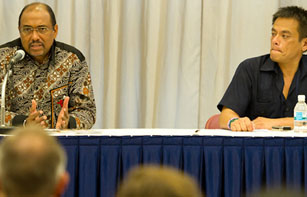
Michel Sidibé, Executive Director of UNAIDS and Vince Crisostomo, Executive Director of the Coalition of Asia and the Pacific Networks on HIV and AIDS.
Credit: UNAIDS/Kim
A wide range of representatives from key affected communities in the AIDS response joined UNAIDS Executive Director Michel Sidibé on 27 August for an interactive dialogue to share their concerns and reflections. The hour-long “Common Ground” session, organized on the second day of the 10th International Congress on AIDS in Asia and the Pacific (ICAAP 10), was held in memory of Dr Robert Carr, a well known AIDS activist and human rights defender who passed away in May 2011.
“My hope is that this will live up to Robert Carr’s vision of all people coming together, regardless of who we are, what we are and where we are—that we will be able to create spaces that empower our communities to move forward in the AIDS response,” said Vince Crisostomo, Executive Director of the Coalition of Asia Pacific Regional Networks on HIV/AIDS (7 Sisters) and Chair of the “Common Ground” session.
My hope is that this space will live up to Robert Carr’s vision of all people coming together, regardless of who we are, what we are and where we are
Vince Crisostomo, Executive Director of the Coalition of Asia and the Pacific Networks on HIV and AIDS
According to a new report from UNAIDS launched ahead of ICAAP 10, HIV infections in the Asia and the Pacific remain concentrated among key populations: people who buy and sell sex, people who inject drugs, men who have sex with men, and transgender people. Most programmes to protect key populations and their intimate partners from HIV infection are inadequate in size and scale. Across the region, stigma and discrimination against people living with HIV and key populations remain rife, the report found.
In his opening remarks, Mr Sidibé recalled his recent visit to the city of Chengdu, China, where he saw first-hand the critical role that civil society organizations play in ensuring access to HIV services for people who inject drugs and men who have sex with men. “Civil society is the engine in the response to AIDS—particularly in Asia and the Pacific,” said Mr Sidibé. “Policy reforms are needed to give these organizations the space to fully engage,” he added.
Civil society is the engine in the response to AIDS—particularly in Asia and the Pacific. Policy reforms are needed to give these organizations the space to fully engage
Michel Sidibé, Executive Director of UNAIDS
Participants in the dialogue raised a number of issues with the UNAIDS Executive Director, including the need for increased access to antiretroviral treatment across the region, as well as for drugs that are simpler, more robust and more resistant. As of end-2009, more than 60% of people eligible for treatment in Asia and the Pacific were not able to access it, according to the new UNAIDS report.
Representatives from organizations of sex workers underscored that the criminalization of sex work remains a major issue across the region. “Despite all the talk about decriminalizing sex work year after year at conferences, only one country in this region has actually done so: New Zealand,” said Janelle Fawkes, a sex worker and Chief Executive Officer of the Scarlet Alliance, an organization based in Australia.
Across the region, punitive laws and policies continue to hamper the AIDS response. Ninety per cent of countries in Asia and the Pacific have laws and policies that prevent people living with HIV, and key populations at higher risk, from accessing life-saving HIV services.
Among the other issues raised at the forum were the need for increased funding for civil society organizations and the importance of human rights protections for key affected populations.

Feature Story
NewGen Asia: Helping young leaders find their voice
27 August 2011
27 August 2011 27 August 2011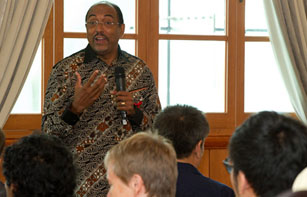
Michel Sidibé UNAIDS Executive Director and young mentees engage in discussion during the launch of the NewGen Aisa initiative.
Credit: UNAIDS/Kim
Across the Asia and Pacific region an estimated half a million young people aged 15-24 are living with HIV. A significant number of all new infections in the region are among young key populations including sex workers, men who have sex with men, transgender people and young people who inject drugs.
To ensure that people who need HIV services are reached, young people require a strong voice and increased representation in the AIDS response. An initiative called New Generation (NewGen) Asia aims to develop the capacity of the next generation of young leaders from key populations to make their voices heard.
Launched on 27 August at the 10th International Congress on AIDS in Asia and the Pacific in Busan, Republic of Korea, the NewGen programme, spearheaded by the Asia-Pacific Inter-Agency Task Team for Young Key Affected Populations, stepped up a gear with an event which showcased the NewGen Mentoring Young Leaders Programme and the official launch of a new leadership course.
“You are not just the leaders of tomorrow, you are the leaders of today,” said UNAIDS Executive Director, Michel Sidibé at the launch. “Leadership is about commitment, courage and confronting what is wrong. With your energy we can build a better world.”
Leadership is about commitment, courage and confronting what is wrong. With your energy we can build a better world
Michel Sidibé, UNAIDS Executive Director
The NewGen Asia event involved a long table lunch which brought together 30 high-level mentors and the new young leaders, predominantly from key populations, whom the mentors will encourage and support. The mentors are drawn from a diverse range of backgrounds, such as civil society, the United Nations, government and young people who already have strong leadership experience. They include among others Ursula Schaefer-Preuss, Vice President of the Asian Development Bank, Khartini Slamah, Chair of the Asia-Pacific Transgender Network and Jimmy Dorabjee of the Asian Network of People who Use Drugs.
A two-way learning and sharing exercise
“I believe NewGen mentoring component is a very important initiative to help stimulate dialogue between young leaders from key populations, who are often stigmatized or in difficult circumstances, and mentors who can help provide vision and leadership,” said mentor Ursula Schaeffer-Preuss, Vice President of the Asian Development Bank.
Gerard Ompad, a young mentee with experience in HIV prevention, thinks the NewGen Asia initiative will help him become a more effective champion of the needs and concerns of his community. “I’m very pleased to be part of this initiative. The training will empower us as young people from key affected communities to become real leaders and develop our advocacy skills. Youth ownership and leadership of the AIDS response is critical and this is a significant step forward for the region,” he said.
Youth ownership and leadership of the AIDS response is critical and this is a significant step forward for the region
Gerard Ompad, young mentee from the NewGen Asia project
During the lively lunch, mentors and mentees discussed their expectations and planned various activities over the coming year. It was generally agreed that it would be a two-way learning and sharing exercise.
Five day leadership course
The event also provided an opportunity for the launch of a five day leadership course for young people from key affected populations and those working with them. The programme has been developed and delivered by a team of technical experts from Youth LEAD, a regional network of groups committed to advancing HIV prevention. Youth LEAD members are also heavily involved in the mentoring programme in collaboration with academic experts and UN partners.
The course will include information on HIV and key affected populations and will have a special focus on skills-based training, including advocacy, communication and leadership.
In a further commitment to championing youth engagement in the AIDS response, Youth LEAD, in collaboration with the HIV Young Leaders Fund also launched a request for youth lead initiatives working to address the needs of those most affected by HIV in Southeast Asia and the Pacific for its 2011-2012 funding round.
It is hoped that the multi-pronged NewGen Asia initiative will reap clear benefits in increasing the effective engagement of key communities which are bearing the brunt of the AIDS epidemic in the region.
Anupama Rao Singh, UNICEF's Director of East Asia and the Pacific Region commented on the importance of the NewGen initiative:
“Young people most affected by the AIDS epidemic are at the heart of prevention revolution in Asia and the Pacific. The NewGen Asia initiative, with support from the regional inter-agency task team, will build young people's leadership to advocate policies and programmes that concern them and prepare a new generation of change agents for the region's AIDS response.”
External links
External links

Press Release
New UNAIDS report shows HIV epidemic at critical juncture in Asia-Pacific region
26 August 2011 26 August 2011Impressive gains across the region, but most countries need greater and sustained efforts to ‘get to zero’
BUSAN, South Korea, 26 August 2011—The AIDS epidemic in Asia and the Pacific is at a crossroads, according to a new report from the Joint United Nations Programme on HIV/AIDS (UNAIDS). While the region has seen impressive gains—including a 20% drop in new HIV infections since 2001 and a three-fold increase in access to antiretroviral therapy since 2006—progress is threatened by an inadequate focus on key populations at higher risk of HIV infection and insufficient funding from both domestic and international sources.
Launched at the 2011 International Congress on AIDS in Asia and the Pacific (ICAAP), the report, titled HIV in Asia and the Pacific: Getting to Zero, found that more people than ever before have access to HIV services across the region. However, most countries in the region are a long way from achieving universal access goals for HIV prevention, treatment, care and support.
“Getting to zero new HIV infections in Asia and the Pacific will demand national responses based on science and the best available evidence,” said UNAIDS Executive Director Michel Sidibé. “HIV programmes must be sufficiently resourced and solidly focused on key populations. Investments made today will pay off many-fold in the future.”
Gains in the regional HIV response, but progress is fragile
According to the report, an estimated 4.9 million [4.5 million–5.5 million] people were living with HIV in Asia and the Pacific in 2009, a figure that has remained relatively stable since 2005. The majority of people living with HIV in the region are in 11 countries: Cambodia, China, India, Indonesia, Malaysia, Myanmar, Nepal, Pakistan, Papua New Guinea, Thailand and Viet Nam.
Across Asia and the Pacific, there was a 20% decline in new HIV infections between 2001 and 2009—from 450 000 [410 000–510 000] to 360 000 [300 000–440 000]. Cambodia, India, Myanmar and Thailand have reduced their HIV infection rates significantly with intensive, wide reaching HIV prevention programmes for people who buy and sell sex.
The number of people accessing life-saving antiretroviral treatment in the region has tripled since 2006, reaching some 740 000 people at the end of 2009. Cambodia is one of only eight countries in the world to provide antiretroviral therapy to more than 80% of the people eligible for it. However, as of end-2009, more than 60% of people in Asia and the Pacific who were eligible for treatment still could not access it.
The report found an estimated 15% decrease in new HIV infections among children since 2006. But regional coverage of HIV services to prevent new HIV infections in children continues to lag behind global averages, particularly in South Asia.
According to the report, HIV epidemics can emerge even in countries where HIV prevalence was previously low. After a more than 20-year ‘low and slow’ HIV epidemic in the Philippines, for example, the country now has a rapidly expanding epidemic among key populations. In the city of Cebu, HIV prevalence among people who inject drugs increased from 0.6% to 53% between 2009 and 2011. In Manila and Cebu, HIV prevalence among men who have sex with men is estimated at 5%.
Key populations at higher risk of HIV infection
According to the report, new HIV infections in the region remain concentrated among key populations: people who buy and sell sex, people who inject drugs, men who have sex with men, and transgender people. Most programmes to protect key populations and their intimate partners from HIV infection are inadequate in size and scale.
Across the region, stigma and discrimination against people living with HIV and populations at higher risk of infection remain rife. About 90% of the countries in the region retain punitive laws and policies that effectively prevent people living with HIV and key populations from accessing life-saving HIV services.
Data suggest that a significant proportion of new HIV infections within key populations are among young people under the age of 25. In most settings, HIV prevention programmes are failing to sufficiently reach young people most at risk.
More AIDS resources urgently needed
The AIDS response in Asia and the Pacific is underfunded, the report found. In 2009, an estimated US$ 1.1 billion was spent on the AIDS response in 30 countries across the region—approximately one third of the funding needed to achieve universal access goals to HIV services.
Though China, Malaysia, Pakistan, Samoa and Thailand are funding the bulk of their HIV response from domestic resources, many countries in Asia and the Pacific depend heavily on foreign funding, particularly for the provision of antiretroviral therapy. Increased investment of domestic resources, especially in middle-income countries, is critical for the ongoing regional response to HIV.
Funding cutbacks from international donors also threaten progress in the regional AIDS response. In 2009, international assistance for the global AIDS response leveled off for the first time in a decade, and in 2010 it declined.
According to the report, investments to protect key populations from HIV remain insufficient. Among countries reporting detailed expenditure data in 2010, only 8% of total AIDS spending in South Asia and 20% in Southeast Asia focused on HIV prevention among key populations at higher risk of HIV infection.
Contact
UNAIDS BangkokBeth Magne Watts
tel. +66 81 835 34 76
magnewattsb@unaids.org
UNAIDS Geneva
Saira Stewart
tel. +41 79 467 2013
stewarts@unaids.org
Publications
Publications
Press centre
Download the printable version (PDF)

Feature Story
Asia-Pacific AIDS champions call for the realization of the 2011 Political Declaration on HIV/AIDS ahead of ICAAP 10
26 August 2011
26 August 2011 26 August 2011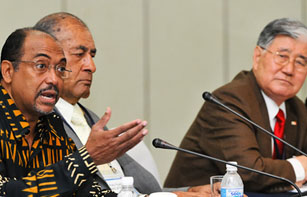
(Left to Right): Michel Sidibe, Excutive Director, UNAIDS, Ratu Epeli Nailatikau, President, Republic of Fiji, with Jong Sam Park, CEO, World Vision Korea. AIDS Champions meeting,
August 26, 2011.
Credit: Bertha Shoko/Nyanga, Zimbabwe
An AIDS champions meeting, held just before the opening ceremony of the 10th International Congress on AIDS in Asia and the Pacific (ICAAP10), brought together some of the most vocal leaders and activists across Asia and the Pacific to call on states, donor organizations and partners to implement the 2011 Political Declaration on HIV/AIDS: Intensifying our efforts to Eliminate HIV/AIDS, adopted by all UN Members States at a High Level Meeting on AIDS in June.
Participants at the event included the President of the Republic of Fiji, Ratu Epeli Nailatikau, Australia’s Ambassador for HIV, Murray Proctor, the Special Envoy for AIDS in Asia and in the Pacific, Dr Nafis Sadik, and UNAIDS Executive Director Michel Sidibé, among others.
“The High Level Meeting gave us ‘words’. Now we need action,” said President Ratu Epeli Nailatikau. “We need to up the ante and learn from countries that have faced serious HIV epidemics, so we can better focus our responses in our communities,” he added.
The High Level Meeting gave us ‘words’. Now we need action. We need to up the ante and learn from countries that have faced serious HIV epidemics, so we can better focus our responses in our communities
H.E. Ratu Epeli Nailatikau, President of Fiji
With ICAAP considered the second largest HIV forum in the world, the AIDS champions meeting was an important opportunity for participants to align advocacy strategies, as well as for debate and discussion.
“This Champions meeting not only impacts the Asia Pacific region, but the world. To meet the commitments made at the High Level Meeting—towards zero new HIV infections, zero discrimination and zero AIDS-related deaths—we need to reform our way of doing business,” said Mr Sidibé, in his remarks at the gathering. “To do this, we need AIDS champions from government, civil society and partners. But let us not forget the people outside the room whose voices we also need to listen to,” he said.
Many representatives from national parliaments, civil society and the private sector participated in the meeting. HIV ambassadors and champions committed to support regional and country advocacy efforts to ensure key affected populations have access to HIV prevention, treatment, care and support services.
“Despite current financial challenges this is an opportunity for the Asia Pacific community to closely examine global commitments and see how these best fit our regional contexts, to ensure responses and programmes are clearly focused on key populations at highest risk,” said Murray Proctor, Australia’s Ambassador for HIV.
To meet the commitments made at the High Level Meeting—towards zero new HIV infections, zero discrimination and zero AIDS-related deaths—we need to reform our way of doing business
Michel Sidibé UNAIDS Executive Director
The meeting also shone a light on the crucial role of existing and emerging leaders in the AIDS response across the region in “getting to zero” and in engaging young leaders from key populations at higher risk. Young people from marginalized populations such as men who have sex with men, transgender people and sex workers are among the most vulnerable to HIV infection in the in the Asia Pacific region.
Speaking from the perspective of young people in the ICAAP 10 host country, a young leader from the Republic of Korea said: “This is our first time participating in such a regional platform. We are ready. We need advice and support to help us develop innovative vision and ensure young Koreans at risk are able to access HIV information, education and services.”
Within the context of this year’s theme “Diverse Voices, United Action”, the AIDS champions endorsed a joint statement, to be read at the official opening ceremony of ICAAP10.
External links

Feature Story
Tenth Congress on AIDS in Asia-Pacific opens under theme ‘Different Voices, United Action’
26 August 2011
26 August 2011 26 August 2011
Michel Sidibé, UNAIDS Executive Director, addresses the participants during the opening ceremony of ICAAP 10
Credit: UNAIDS/Kim
The 10th International Congress on AIDS in Asia and the Pacific (ICAAP) opened on 26 August 2011 in Busan, the Republic of Korea, under the theme "Different Voices, United Action." The event, which is held every two years, is hosted by the Joint United Nations Programme on HIV and AIDS (UNAIDS) and the AIDS Society of Asia and the Pacific (ASAP).
Among the delegates attending the opening ceremony were the South Korean Minister of Health and Welfare, Soo-hee CHIN, the President of Fiji, Ratu Epeli Nailatikau, and the UNAIDS Executive Director, Michel Sidibé. They were joined by hundreds of activists and researchers from across the region.
ICAAP comes at an important time in the region’s HIV epidemic and response. According to a new report released by UNAIDS ahead of the Congress, the Asia and Pacific region is at a crossroads: while impressive gains have been made—including a three-fold increase in access to antiretroviral therapy since 2006—progress is threatened by an inadequate focus on key populations at higher risk of HIV infection and insufficient funding from both domestic and international sources.
More than 60% of people living with HIV in Asia and the Pacific are still unable to access HIV treatment. The science shows clearly that when you put people on antiretroviral treatment, it has a 96% protective effect against HIV. So why are we waiting?
Michel Sidibé, UNAIDS Executive Director
“There is no time for complacency in this region,” the UNAIDS Executive Director, addressing an audience of more than 2000 people in the ICAAP opening ceremony. “More than 60% of people living with HIV in Asia and the Pacific are still unable to access HIV treatment. The science shows clearly that when you put people on antiretroviral treatment, it has a 96% protective effect against HIV. So why are we waiting?”
Among the main goals of ICAAP are to empower and strengthen political, community and business leadership by adopting consultative, collaborative and participatory approaches, and to offer a platform where different voices from diverse communities across Asia and the Pacific can reassemble to deliver united action.
“We stand here together because, at the end of the day, we are all seeking the same thing— health, livelihood and acceptance for all, regardless of race, religion, sexual orientation, gender identity, occupation, or HIV status,” said Laurindo Garcia, a Filipino national and coordinator of two regional networks in Asia and the Pacific for men who have sex with men and transgender people.
We stand here together because, at the end of the day, we are all seeking the same thing— health, livelihood and acceptance for all, regardless of race, religion, sexual orientation, gender identity, occupation, or HIV status
Laurindo Garcia, activist
Delegates are expected to engage on a wide range of issues and contexts for the HIV epidemic in the Asia-Pacific region including legal impediments to universal access; recent progress in basic and clinical HIV research; prevention in the rapidly changing communities of men who have sex with men; and the changing political and financial environment, as well as its implication for the AIDS response.
The Congress also seeks to ensure that affected communities and their families are free from stigma, marginalization and discrimination by addressing barriers and working towards societies where the full range of human rights can be taken for granted.
“We have been focusing in South Korea on HIV infection control as the pillar of our national AIDS policy,” said South Korea’s Minister Chin in a statement. “But we realize now that we must change our approach to also address human rights issues in the care of people living with HIV,” she added. Though South Korea has a very low national HIV prevalence, stigma and discrimination remain a major barrier to accessing HIV services in the country’s AIDS response.
Held over five days, the conference has drawn together more than 4,000 delegates representing more than 55 countries for discussion around the AIDS response in the region. The 10th International Congress on AIDS in Asia and the Pacific concludes on 30 August.
Speeches
Speeches
- UNAIDS Executive Director Michel Sidibé (26 August 2011)

Feature Story
‘Young People We Care' volunteers assist vulnerable households in Zimbabwe
24 August 2011
24 August 2011 24 August 2011A version of this story was first published at UNICEF.org

Young People We Care volunteers harvest for Ambuya Sylvia Nyawera.
Credit: Bertha Shoko/Nyanga, Zimbabwe
Ambuya Sylvia Nyawera is an elderly woman from the village of Dombo in the rural Nyanga area of Zimbabwe, about 300 kilometres east of Harare. Her life can be lonely. After spending the weekend with her son John, a schoolteacher in another part of Nyanga, Ms. Nyawera is by herself again.
She lost her other children to AIDS-related illnesses a few years ago. “If they were here, they would take care of me,” she explains. “John does his best, but he can’t be here all the time because he has to work and also take care of his family.”
Although HIV prevalence in Zimbabwe is declining, at more than 14 percent in the adult population it is still high. Many older people have been affected by HIV, with the death of their children leaving them to fend for themselves. Some are also now caregivers to the almost one million orphans left behind by AIDS in the country.
Although Ms. Nyawera feels a deep sense of longing for her late children, she has been blessed with more ‘children’ who visit her at least three times a week through the Young People We Care (YPWC) programme. She looks forward to their company.
Easing the burden
Without these children I really would not have harvested much. They worked hard. God will bless them
Ambuya Sylvia Nyawera, Nyanga, Zimbabwe
An initiative of UNICEF Zimbabwe, the YPWC programme began in 2005. It is part of an effort to offer support to households where there is illness or where an elderly person has no one to take care of them.
YPWC also gives young people information on how to prevent HIV, how to access care and treatment to young people in need, and provides skills training in preparation for adulthood. Several thousand participants have now gone through the programme.
This past farming season, YPWC members helped Ms. Nyawera plant and harvest about 20 bags of maize, her biggest crop in five years. They also assisted her with planting and harvesting potatoes, thereby significantly improving food security in her household.
“Without these children I really would not have harvested much. They worked hard. God will bless them,” says Ms. Nyawera.
An enriching experience
Before I became a member of the YPWC programme, I had very little knowledge about AIDS. Now I understand that I can live a normal and productive life even though I am HIV-positive.
Hilda, member of the YPWC club in Nyanga, Zimbabwe
Being part of a YPWC club also often benefits the young volunteers. The Nyanga club is composed of 10 young people who are out of school.
One of them, Hilda, 18, has been living with HIV since birth and recently started antiretroviral treatment. As a result of illness, Hilda sometimes cannot join her team for home visits, but she never misses a chance when she is well.
Hilda says being a volunteer has allowed her to come to terms with her own HIV status.
“Before I became a member of the YPWC programme, I had very little knowledge about AIDS,” she recalls. “Now I understand that I can live a normal and productive life even though I am HIV-positive.”
Part of the solution
With support from UNICEF and many others, YPWC continues to make a difference in towns and villages across the country.
“The role that the YPWC clubs is playing in communities cannot be over emphasized,” says UNICEF Representative in Zimbabwe, Dr. Peter Salama. “As a result of HIV, the burden of care remains very high in many communities,” he adds. “Young people represent a critical element of the solution, and we need to continue to honour their skills and energy.”

